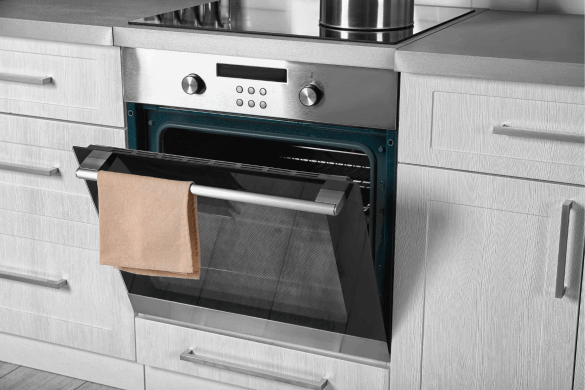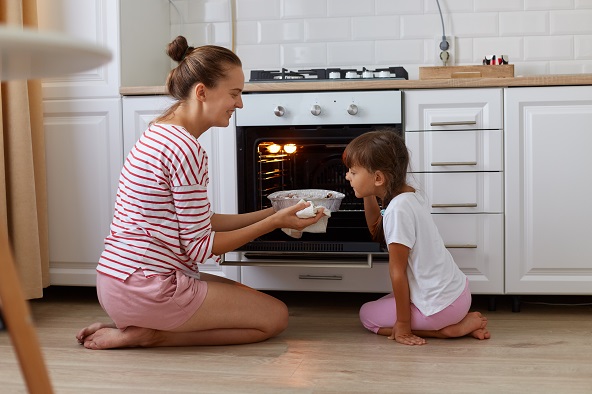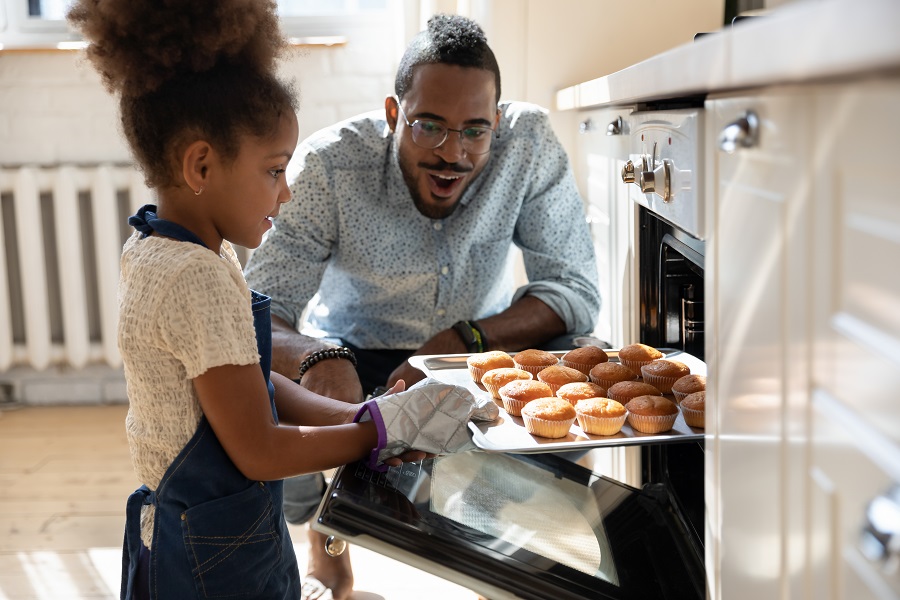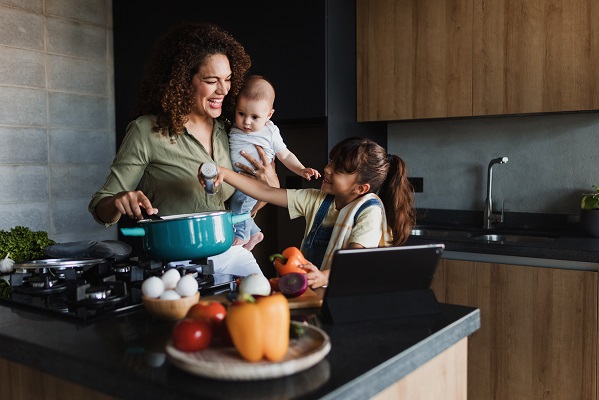Does your cooking and baking often turn out different from how you expected? Dinner guests started declining invitations? Well, the issue might be to do with your oven temperature conversions. If you're following recipes that use different temperature scales to those on your oven, you could be setting it wrong.
Knowing how to switch between Celsius, Fahrenheit and gas mark is key. We're going to walk you through the common temperature scales and adjustments for fan ovens. Plus, we've got a handy conversion chart for quick reference. Let’s get started.
Oven temperature scales

Oven temperatures can be listed in Celsius (°C), Fahrenheit (°F) or Gas Mark. Most of the world uses Celsius, while the US tends to stick with Fahrenheit. Gas Mark is a British system that you’ll still find on older ovens. Since recipes use different temperature units, it’s important to know how to switch between these scales. Your oven might only show one type, so you might need to know how to convert it.
Fan oven temperatures
Fan ovens tend to cook food more evenly and quickly because they circulate hot air. Since they’re more efficient, if the temperature is given in Celsius for a conventional oven, you should turn it down it by about 20 degrees. So, if a recipe calls for 200°C in a conventional oven, set your fan oven to about 180°C.
This little adjustment will mean your food cooks perfectly without drying out or burning. Similar to air fryers, fan ovens usually need less cooking time, so keep an eye on your dishes to stop them from coming out a little singed.
Oven temperature conversion chart
You can use the chart below to convert oven temperatures between Gas Mark, Fahrenheit, Celsius and fan oven. So if a recipe calls for a 180°C setting but your oven uses Fahrenheit – set it to 350°F. Doing this means you’ll still be able to cook your dish at the right temperature whatever the measurement unit.
Why it’s important to cook at the right temperature
%20(1)%20(1).png)
If you want your food to turn out just right – you need to get the temperature just right too. Using the wrong heat setting can affect things like texture, flavour and potentially your health if the food isn’t cooked properly. Some meats need a certain amount of heat before they're safe to eat. Although too much can leave them dry.
If you’re a baker, your kitchen can sometimes feel like a science lab. Getting the temperature right is crucial if you want the right rise and texture for your breads and cakes. Plus, it means your food will taste and look great, and always be cooked enough to be safe to eat.
How to ensure your oven temperature is accurate
Here are some tips you can use to help ensure your oven’s working properly and heating at the right temperature:
- Put an oven thermometer inside so you can compare its reading with the oven's temperature gauge
- Clean off grease and baked-on food as these can cause uneven heating
- Check and replace the oven door seal (gasket) if needed
- Have a look at the heating elements for any damage and replace them if you need to
Avoid overfilling your oven when cooking so it allows a proper airflow and even heat distribution.
Get in touch if you need help with your appliance
Tried those tips and still think your oven temperature might not be accurate? Or maybe your food isn't cooking properly despite setting the correct temperature? If so, it’s probably time to arrange an expert oven repair. A professional will be able to diagnose and fix any issues. So you can get your oven working properly (and your guests round for dinner) once again.
Our blog is loaded with more related articles

Oven tips
A guide to fan oven symbols and settings
Get to know your oven by understanding its symbols and the settings they represent. From fan oven programmes to cleaning...
Read more

Oven tips
Electric or gas oven: the key differences
Find out the differences between electric and gas ovens, including their cooking performance, energy efficiency, maintenance re...
Read more

Oven tips
How to use an oven: a step-by-step guide
Getting your oven settings right is crucial for cooking food safely and taking care of your appliance. Get some tips from our g...
Read more
